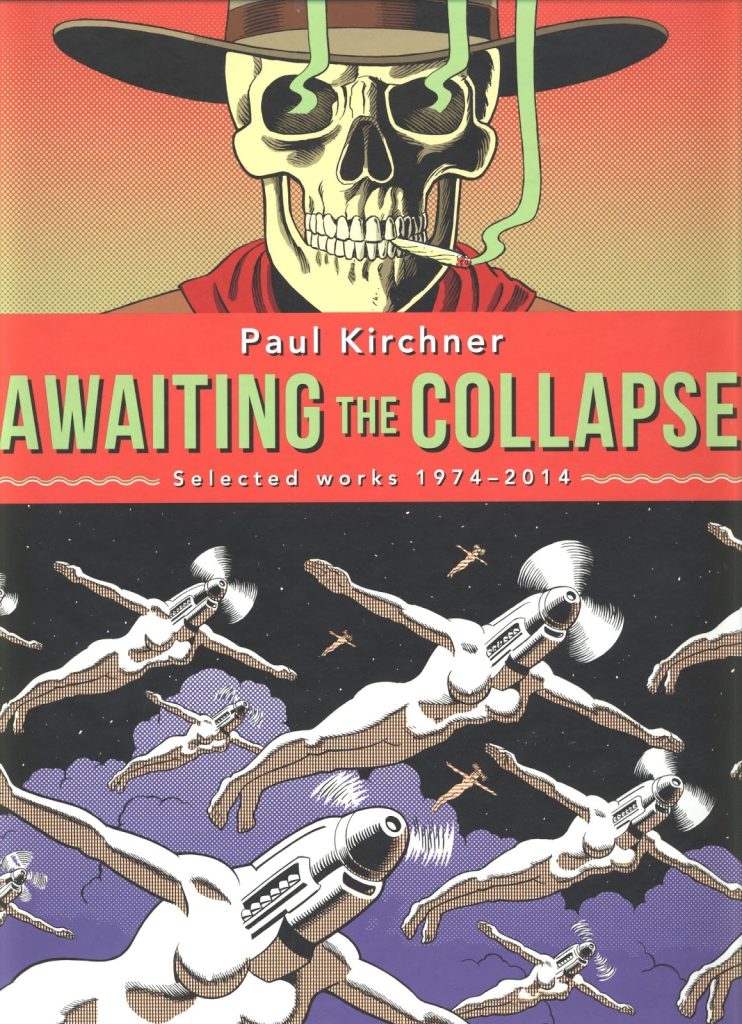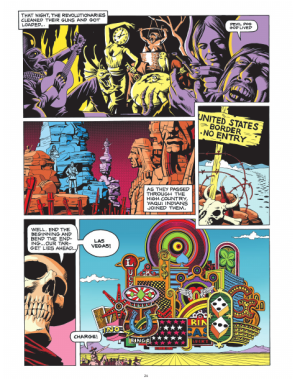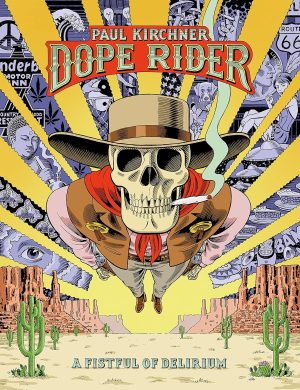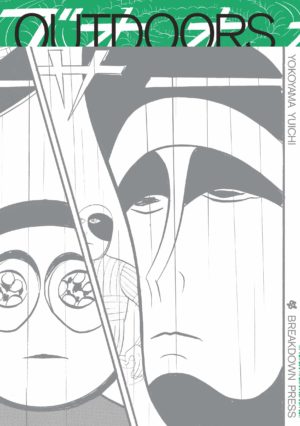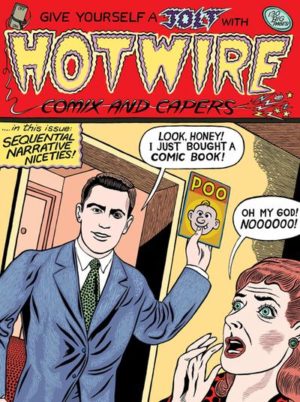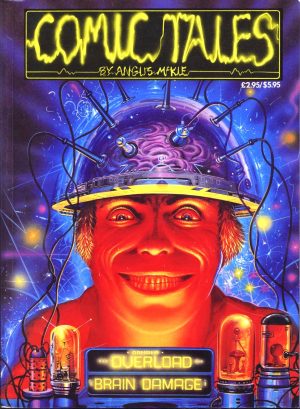Review by Karl Verhoven
Paul Kirchner has sustained a career as a comic artist and illustrator since the 1970s, yet mentioning his name to most comic fans would draw a blank, with some perhaps recalling The Bus being a Heavy Metal mainstay in the early 1980s. Kirchner’s work has been broad and varied, but often as the strip artist in magazines, or working on licenced properties enjoyed by millions entirely unconcerned about creative input.
Those features aren’t included in Awaiting the Collapse, but plenty of strips commissioned by High Times are. Kirchner’s surrealistic Dope Rider character didn’t originate there, but proved an ideal fit in 1975. He’s a skeleton, first seen riding a horse, but a creation who transcends time and space in search of his high, although he’s sometimes a man with a mission like when he saves Pancho Villa from his firing squad execution, escaping on giant scorpions.
Kirchner’s natural style being precise linework acts as a mask, appealing and clean, yet inviting readers into a miasma of influences. You don’t have to be an art historian to recognise numerous nods to artists favoured by the counterculture in the 1970s, with a little Aztec imagery here, a little Dali there, here a Bosch, there an Escher, and the vivid colour patterns reflecting heightened states. The Dope Rider strips take a compositional approach to individual panels, and never has absurdism been presented with a straighter face. Yes, a story is followed, but it’s journey that’s the key.
Such sampled phrases are frequent, pulled from sources as varied as Karl Marx and Janis Joplin lyrics, accompanying sound koans such as “Kali. Lt Calley. California”, along with clever questions simultaneously meaningless and deep. “If two plus two equals four”, states Dope Rider, “does to plus to equal for?” The question is possibly given extra weight by Dope Rider being saddled up on a dead fish as he poses the query.
Away from Dope Rider the influence of Moebius is more apparent on the story being told, such as the quest of ‘Tarot’, while the incredibly ornate and detailed art is reminiscent of Jean-Claude Gal or Andreas.
Sex magazines also solicited Kirchner’s work in the 1970s, and while his illustrations are in the tradition of exotic glamour, some now no longer seem cheeky male fantasies, but sleazy, with the cover of a businessman kicking back on furnishings of naked women the worst offender. However, the cheery cartoon sex of ‘Dolls at Midnite’, influenced by 1920s animation still resonates.
Attempts to tell more conventional stories fill the final quarter of Awaiting the Collapse. They provide an insight into Kirchner as a unique creator. Despite being produced for ostensibly commercial comic anthologies, they still drip individuality, defying instant categorisation. Commerciality is no concern, so Kirchner turned in strips on the Final Judgement, the dreamscape and a man’s struggle to have his surroundings personify order. They’re all glorious.
Kirchner’s anecdotal essay running through his career appears at the end, containing contextualising paragraphs about the work that precedes it. Chatty and informative, the greatest surprise is how close Kirchner came to working in mainstream comics. Read this collection and you’ll be so glad he didn’t. A further collection of Dope Rider strips awaits in A Fistful of Delirium.
